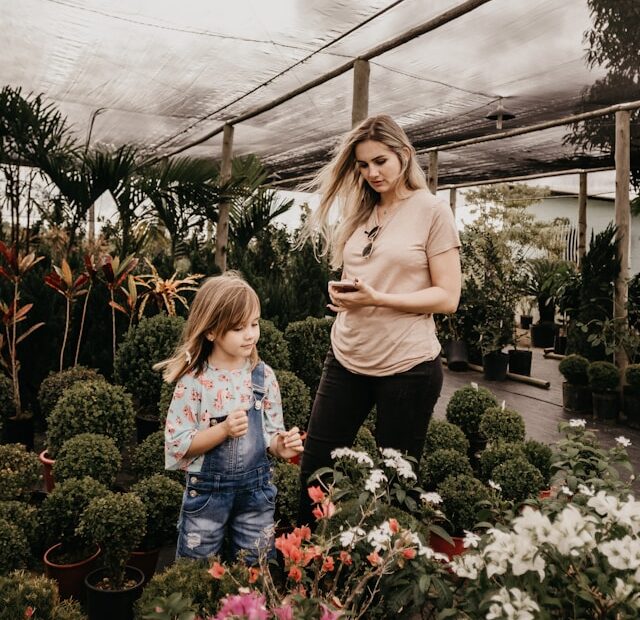So, where’s your closest garden centre?
Not so close anymore, I bet.
Local gardening centres keep vanishing as wide-ranging constraints force massive changes on this industry. Real estate costs have spiraled. Emerging residential zoning champions density which gobbles up urban greenspaces. Lifestyle changes erode the time available for the hobby of gardening.
So, where’s your closest garden centre?
In place of trees that once provided canopies for backyards, there’s now increased demand for screening trees which afford a degree of privacy but no shade and minimal habitat for birds. A once diverse array of shrubberies is now narrowed to a scant few choices. Picking gardens of seasonal blooms are being replaced with hardscaping. Whereas there was once a rose garden, there now might be a single rose bush.
My back garden in late summer. Weeds don’t stand a chance.
Photo credit: Jane Macdougall
You know what suffers when we lose green space? Everything! Not just birds and bees – although they take a massive hit with these changes – but also a sense of neighbourhood. Before the house was torn down and a four car garage replaced a bountiful garden, I used to be the happy recipient of a neighbour’s excess tomatoes. Someone down the lane often left zucchinis in a box for anyone to help themselves to. Many of the old homes in my neighbourhood have well established fruit trees that I get to plunder when they’re heavy with apples and pears. My own excess rhubarb gets delivered to the rhubarb-less.

Perhaps lawns, too, aren’t long for the urban world. They’re odd things, lawns, aren’t they? As beautiful as they may be, those absolutely beguiling verdant expanses got their start, not as pastures for human beings, but as a first line of military defense.
… launde, meaning glade, or opening in the woods.
The word lawn derives from the Middle English, launde, meaning glade, or opening in the woods. As much as being beautiful to look at, lawns had a protective purpose in their origin. Back in the day of castle construction, security was always an issue. It was much harder to creep up on a fortification or village if it was surrounded by open space.

Village commons or greens were spaces where inhabitants were allowed communal grazing rights. The livestock kept the open spaces shorn, albeit not free from the hazards associated with livestock. Other than keeping an open field of green cut short by virtue of grazing animals, scythes were used to cut the grass.
Portrait of my beloved reel mower. Photo by Jane Macdougall.
Edwin Budding introduced the lawn mower in Gloucestershire, England in 1830. The essential design and manufacture of that lawn mower remains relatively the same today. Then as now, two wheels support rotary blades that hover over the surface of the grass while the device is pushed from behind. With this innovation came the rise of a variety of new sports played upon these more evenly shorn fields of grass. Everything from croquet, lawn bowling, lawn tennis, to football owes their beginnings to the advent of the lawn mower.
The biggest innovation in years are the new lawn mower bots ….
Today you can choose from gas to electric, from ride-’em to push mowers. The biggest innovation in years are the new lawn mower bot that chew away at your lawn without any supervision or manpower.
My back garden in spring. A refuge for birds, bees, and only a few weeds. Photo credit: Jane Macdougall
I favour an old-style push mower. I have only a smidgen of lawn so it’s more than enough for the job. The rest of my garden is a jungle devoted to a pesticide-free naturescape of native plants. I’m on the side of birds and bees, just doing what I can do to offset the loss of greenspaces in the neighborhood.
This week’s question for readers:
TO LAWN OR NOT TO LAWN, THAT IS THE QUESTION.
Leave your Comments below!
Register for The Plain Jane newsletter and stay up to date with upcoming contests.
Submissions to last week’s question:
HAVE ANY QUICK FIXES TO ADD TO MY LIST?
Definitely Jane Macdougall has my vote for Ruler of the World! Shoe laces that stay tied (the hard to find flat ones did better than the round), and interchangeable jar lids are far more important than, per the same page in the Sun, hockey fans so stressed they need the advice of a psychologist!
Gerald Baskett
If I were in charge, it would be illegal to manufacture women’s pants without a pocket large enough to carry a phone. Fake pockets that are not even large enough to squeeze in some “mad money” would render the manufacturer subject to fine or imprisonment.
Pat Mullaney
I would so appreciate it if you ruled that those vegetables and fruits that masquerade as tomatoes, actually taste like tomatoes.
Chris Coakley
It should be illegal that the cost of new batteries exceed the cost of replacing the thing needing new batteries. Planned obsolescence is a planet killer!
C. Li
A friend showed me the “Loggers Knot” a couple of decades ago. I taught it to my elementary grade students. First, you do the overlap and under. Second, you make the bunny ear. Third, you wrap the lace around the ear not once but twice. Fourth, push the wrap around lace through the double wrap hole you just created. Holds tight in all conditions and can be undone by pulling just one lace.
Aaron Rahn
If anything, weekend traffic is worse than traffic during the week, yet out-of-touch street signage still allows parking and stopping along arterial roads on weekends. Because of these antiquated rules, four lane roadways become one lane each way and traffic gets unnecessarily tied up. If it wasn’t permissible during the week, why is it okay on the weekend? The roads are just too busy nowadays so change the signs to seven days a week. In addition, “rush hour” rules are also out of date. Traffic in the city is heavy most of the day, not just during rush hour. Our parking and stopping regulations need modernizing. The fix is easy-peasy!
Roger Bryant
I just want to comment on the problem of shoelaces that don’t stay tied. If anyone is having problems with their laces untying, it’s likely they are tying a granny knot. The solution is to learn how to tie a square knot. A square knot is easy to identify as the two loops will stick out on each side of the shoe. When you become the Ruler of The World you could pass a law that everyone must use a square knot to tie their laces and anyone that gets it wrong would be flogged with a shoelace with a medal tip.
James Mackie
Simple fix for shoelaces
During WW2 service training with the Vancouver Seaforth our father learned and then taught us all this tying technique – not just for shoe laces but bathing suit and other cords as well: wrap lace twice or three times, make the bow loop and pass it and the cord-end through, not once but twice. Tug firmly and it will not come undone no matter how slippery and shiny the cord.
RL Read
The answer is a double knot for your shoelaces. Tie a double knot. Take that loop before you tie it off and go back around one more time then pull to tie. I’m sure YouTube can show you a double knot for runners. I hope it helps. I wear orthotics so my foot pushes up and makes the shoelaces hard to tie. Making a double knot is challenging as I hardly have room for a single.
Jeanne Ciccone
I have the solution for your shoelaces, a trick my mom taught us and we all still use. Once you have looped the second “bunny ear” around the first, do it again and then pull tight. The shoelace will not loosen, but easily unties when the ends are pulled.
Diddi Price
Skip traditional shoelaces altogether! I use those new bungee cord style laces. Knot tying will soon be a dead art. Technology marches on!
S. Nguyen
Shoelaces are crap these days. Appliances are crap these days. Everything is crap these days. If governments simply put a No Crap Rule in place, we’d solve a lot of the world’s problems.
Name Withheld
